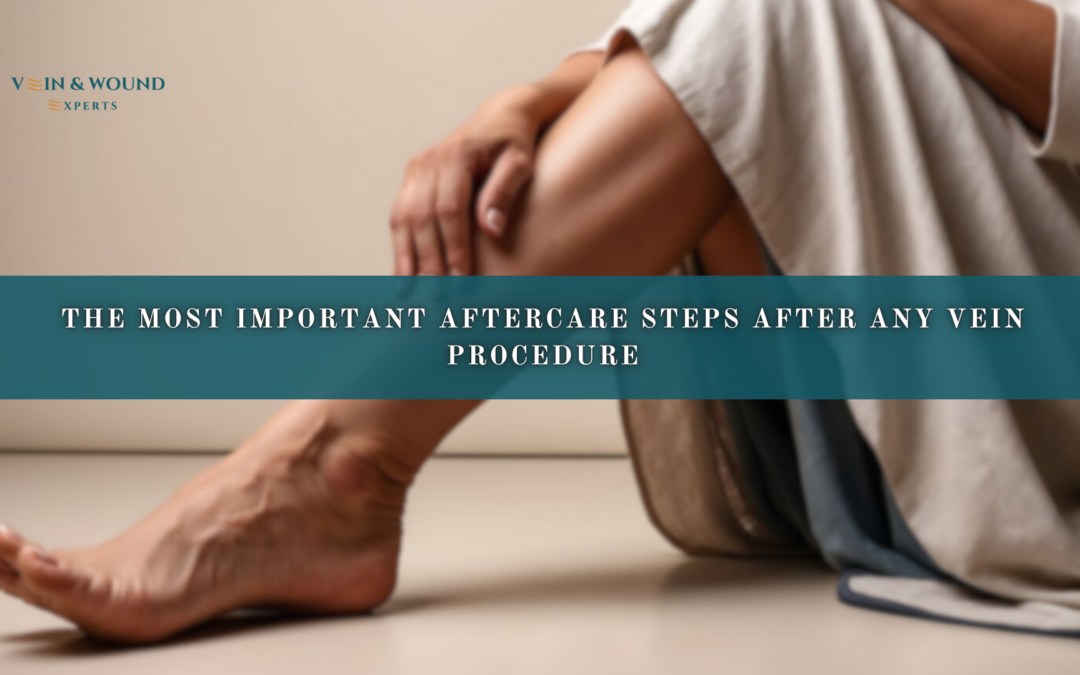Effective Vein Treatment Aftercare 🩺
Proper healing after a vein procedure depends on the steps taken in the hours, days, and weeks that follow. Many people assume recovery is passive, but the body responds best when guided by structured routines that support circulation, reduce inflammation, and protect the treated area while new tissue forms. Understanding the best aftercare for vein treatment ensures smoother results, fewer complications, and a quicker return to everyday activity. While each procedure such as sclerotherapy, endovenous laser, or radiofrequency has its own nuances, several core principles remain the same and can be applied across recovery plans.
🚶♂️ Prioritizing Movement After Your Procedure
One of the first recommendations after a vein procedure is to begin gentle walking soon after treatment. This simple routine supports healthy circulation and reduces the likelihood of pressure buildup in the treated area. A slow, steady pace for short intervals can be more effective than longer, strenuous walks. Most specialists encourage brief walks every hour during the first day, followed by more structured activity over the next several days. This rhythm helps minimize stiffness, promotes venous return, and assists the treated vein as it begins to seal.
Activity should always feel manageable. If discomfort increases, shortening the distance or reducing the pace is typically more helpful than stopping movement entirely. Gradual improvement is expected as circulation stabilizes. Any sharp or persistent pain should be noted, as it signals the need for evaluation. During this time, patients should avoid running, squatting, prolonged climbing, or heavy exercise, as these can strain healing tissue.
🧦 Using Compression for Support
Most aftercare plans include wearing fitted garments to promote consistent pressure on the treated veins. This ensures better blood flow and reduces swelling. Your provider may recommend specific durations depending on the type of treatment performed. Some individuals wear them continuously for the first 24–48 hours, followed by daytime use for several days or more. The purpose of this compression therapy is to support closure of the targeted vein while preventing pooling in surrounding vessels.
The garment should feel snug but not restrictive. Wrinkles or folding can cause unnecessary irritation, so proper application matters. As swelling decreases, the fit may feel slightly looser, which is normal. The key is maintaining steady support without interfering with comfort or mobility. If itching, numbness, or intense pressure occurs, the garment may require refitting or replacement with a different size.
📝 Essential Care Habits for Better Healing
Several everyday habits can influence comfort and recovery. Heat exposure such as hot showers, baths, or steam environments—should be avoided for several days because warmth dilates blood vessels and may disrupt healing tissue. Prolonged standing can also increase swelling, especially during the early phase. When rest is needed, elevating the legs helps reduce pressure and supports proper drainage.
Bruising, firmness, and mild tenderness are common responses to vein closure. These usually diminish within days but can take a few weeks to fully settle, depending on the procedure and the size of the vein treated. Monitoring these changes is important because patterns of improvement offer clues about how well the body is responding. Hydration also plays a role, as adequate fluid intake supports circulation and helps reduce stiffness.
Sun exposure should be limited on treated areas to prevent discoloration. If outdoor activity is necessary, covering the area with clothing is usually preferable to using sunscreen during the earliest phase of recovery.
📅 Staying Consistent With Check-Ins
Routine evaluations after treatment help ensure progress is on track. These visits allow specialists to assess closure of the targeted veins, check for any signs of irritation or abnormal swelling, and adjust activity guidelines if needed. Each appointment provides reassurance that healing is progressing normally while offering an opportunity to ask questions or discuss unexpected changes. Structured follow-up care is especially important for individuals with a history of advanced vein disease or circulation concerns.
These check-ins also help identify early outcomes, such as improved comfort, reduced heaviness, or better stamina during daily activities. In some cases, additional minor treatments may be recommended to refine results, which is normal and part of a long-term management plan rather than a sign of complication.
🌿 Supporting Your Healing Journey
Adopting a balanced approach that includes movement, protective routines, and mindful monitoring helps the body transition smoothly after any vein procedure. Thoughtful aftercare reduces discomfort, encourages healthy circulation, and supports the long-term benefits of treatment. With consistent attention to walking, proper garment use, daily habits, and scheduled check-ins, most individuals experience steady improvement and a gradual return to normal activity with greater ease and comfort.

Andy Sharifi
Position
